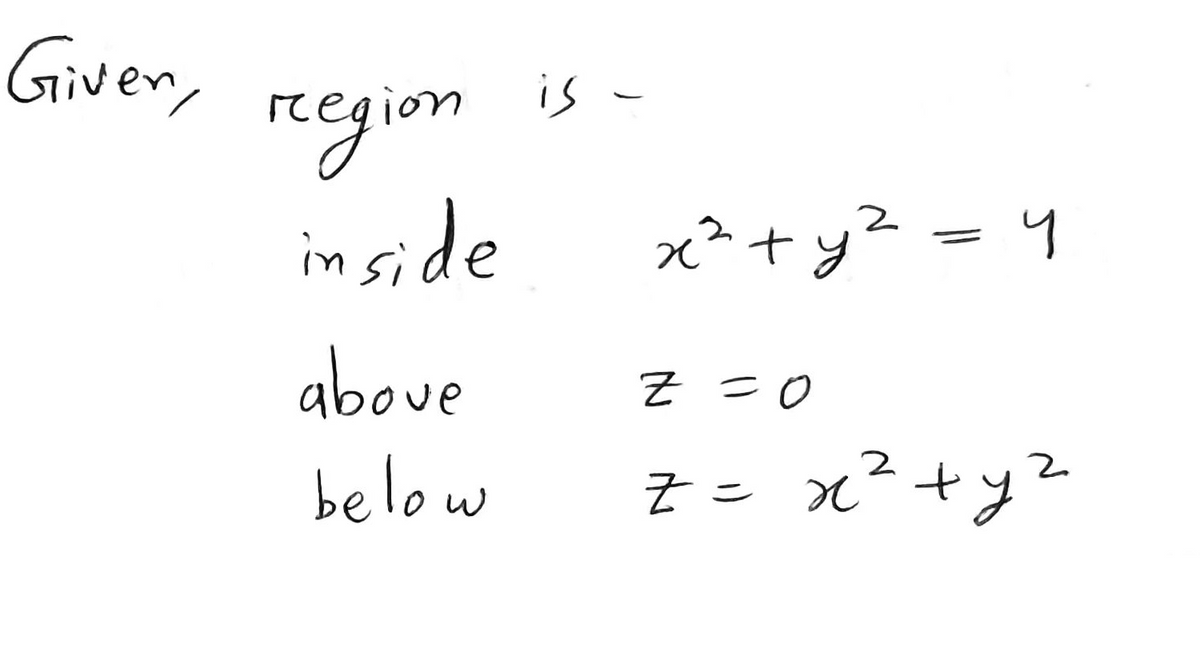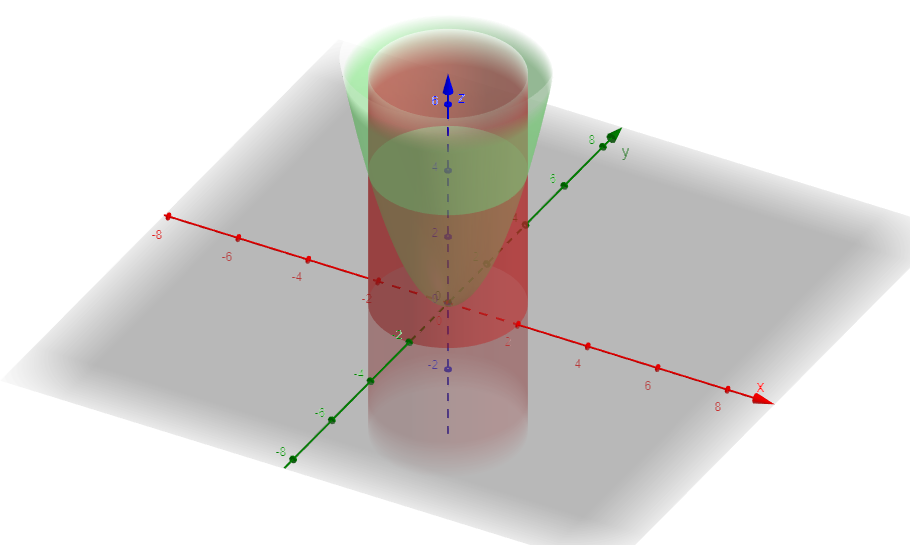Consider the region inside x? + y2 = 4 above z = 0 and below z = x? + y?. 2. Find the mass if the density is constant. 1. Find the volume. 3. Find the mass if the density is What if the density is 4. Find the total charge if the charge density is (x,y) = x
Cylinders
A cylinder is a three-dimensional solid shape with two parallel and congruent circular bases, joined by a curved surface at a fixed distance. A cylinder has an infinite curvilinear surface.
Cones
A cone is a three-dimensional solid shape having a flat base and a pointed edge at the top. The flat base of the cone tapers smoothly to form the pointed edge known as the apex. The flat base of the cone can either be circular or elliptical. A cone is drawn by joining the apex to all points on the base, using segments, lines, or half-lines, provided that the apex and the base both are in different planes.

NOTE: According to guideline answer of first question can be given, for other please ask in a different question and specify the question number .


Step by step
Solved in 3 steps with 4 images









